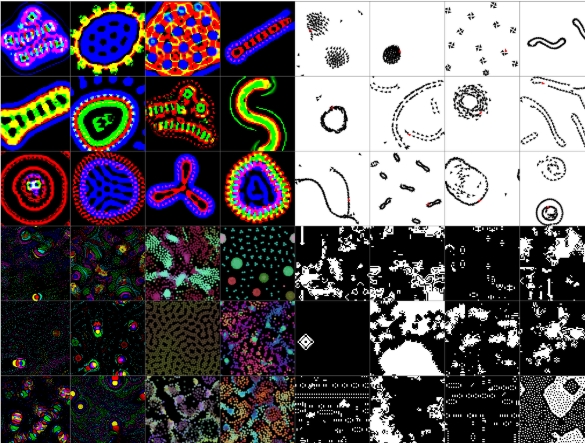In recent years, fundamental models (FMs) have been increasingly used in scientific research, bringing hope for change in many fields. However, the utilization of FMs in the field of artificial life (ALife) is still in its infancy, and huge development potential remains to be tapped. This article introduces a new method called "Automatic Search for Artificial Life" (ASAL), which cleverly utilizes the basic model of visual language to greatly reduce the burden of long-term reliance on manual design and trial and error in artificial life research, and provides This field brings new research paradigms.
In recent years, with major breakthroughs in protein discovery resulting in the Nobel Prize, the potential of fundamental models (FMs) in exploring large combinatorial spaces has gradually emerged, heralding possible changes in multiple scientific fields. Despite this, the field of artificial life (ALife) has not fully exploited these foundational models, which provides the field with huge opportunities for development.
To this end, the research team proposed a method called "Automatic Search for Artificial Life" (ASAL) for the first time. Through the basic model of visual language, it can effectively reduce the burden of manual design and trial and error that the field of artificial life has long relied on.

The core capabilities of the ASAL method include: first, it can find simulations that produce specific phenomena; second, it can discover simulations that produce temporally open novelties; and finally, it can comprehensively display a variety of interesting and diverse simulation spaces. The versatility of this approach enables it to be effectively applied to a variety of artificial life substrates, including Boids, Particle Life, Game of Life, Lenia ” and “Neuronal Cellular Automata,” etc.
Research results show that the ASAL method successfully discovered previously unseen life forms of Lenia and Boids, as well as open cellular automata similar to Conway's Game of Life. Furthermore, the application of basic models makes it possible to quantify phenomena that were only quantifiable in the past. This new research model is expected to transcend mere human creativity and accelerate the progress of artificial life research.
This study also provides a simple ASAL implementation, allowing researchers to get started quickly. The code is implemented using the Jax framework, which has end-to-end fast processing capabilities. The main code includes the creation of basic models, substrates, effective expansion of simulations, and calculation of ASAL metrics. The research team has implemented a variety of artificial life substrates, and users can evaluate the openness of the simulation by running the provided code.
For researchers who wish to run the project locally, it is recommended to first clone the code base, set up the Python environment and install the relevant dependent libraries. At the same time, the research team also provides available notebooks on the Google Colab platform to facilitate users to get started quickly.
Project entrance: https://github.com/sakanaai/asal
Highlights:
The research team proposed the "Automatic Search for Artificial Life" (ASAL) method to use basic models to reduce the burden of traditional design.
ASAL enables the discovery of phenomenon-specific simulations, open-ended novel simulations, and the presentation of a diverse simulation space.
The research results have successfully discovered new life forms and quantified previous qualitative phenomena, promoting the development of artificial life research.
The emergence of the ASAL method marks that artificial life research has entered a new era of automation. This method not only improves research efficiency, but more importantly, it expands the boundaries of human understanding of the phenomenon of artificial life, providing a powerful tool and a new perspective for the development of artificial life research in the future. I believe that with the continuous advancement of technology, the ASAL method will bring us more unexpected discoveries.